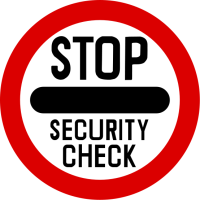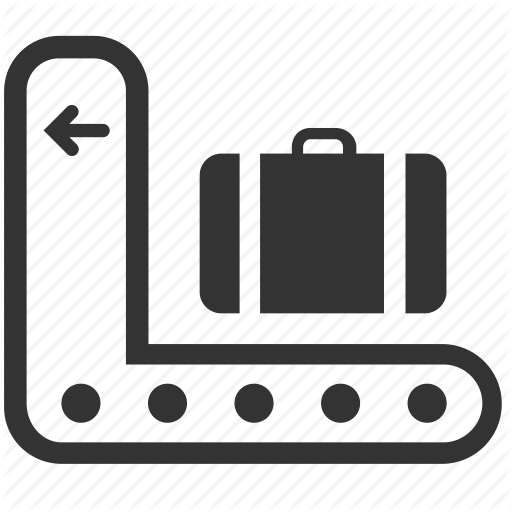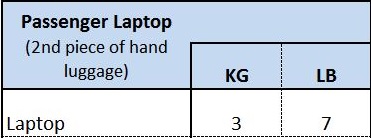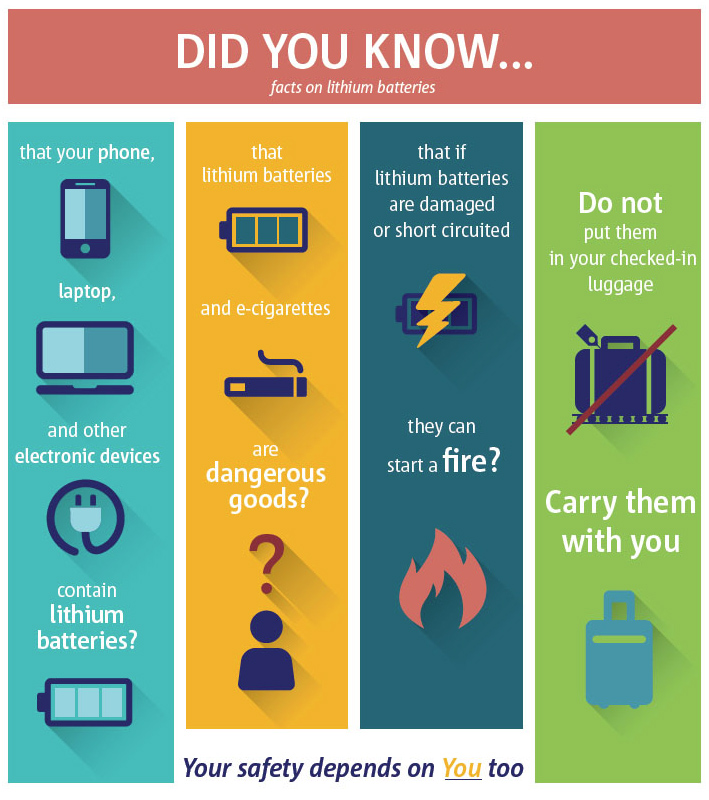21.04.2021
EATC is expected to transport more and more passengers and cargo than before, it pays to be well prepared to avoid potential delays- safety- and security risks. Passengers and Cargo on-board of an aircraft must meet the requirements concerning safety, security and quality to allow acceptance for carriage. The processes are therefore considered essential to the mission and are consequently integrated into EATC's process of optimizing airlift capabilities.
You can prepare yourself using the tips and information below regarding passengers and baggage regulations
Be prepared...
- Plan how you are getting to the airport;
- Check your travelling documents;
- Know where to go;
- Check in;
- Go through security;
- Go to your gate;
- Board your flight;
- Find your seat;
- Listen to the safety demonstration
- Enjoy the flight.

All persons are required to carry valid travel documents in order to be accepted as passengers on board a (military) aircraft unless they are exempted by a competent authority and accepted by the operator. Certain countries have additional requirements regarding passport validity dates (at least 6 months after travelling) or require other travel documents. The possession, correctness and validity of travel documents must therefore be checked before departure. Generic accepted documents are:
- Valid passport with visa if required (for all countries);
- Valid European Union ID card (for European countries);
- Valid military ID and valid NATO travel order (for NATO countries).
Passengers must comply with laws and regulations in the countries of departure, transit and destination. If requested to do so by customs, security officials or a border crossing authority (immigration office, etc.), passengers must present their ID card, passport or other required travel documents. Also, baggage may be part of this inspection. This is independent of the checks conducted on behalf of the operator during check-in. Prohibited items may not be imported/exported and may lead to confiscation and could even lead to legal penalties.


Security check
Airports consist of two areas: landside with the check-in and baggage drop, and airside with the aircraft. To get to airside, passengers must clear the security barrier. You will only be accepted for transport if you meet the criteria of an acceptance and security check, validated by dedicated air terminal personnel:
- Transport must be authorized by the responsible authority;
- You have to identify yourself by valid travel documents;
- Required travel documentation, visa, etc. must be valid;
- Prohibited items are to be excluded from carriage;
- You must be fit to fly.

Check-in baggage
(Check-in)Baggage, not being carry-on baggage or cargo, must be presented at check-in before the flight. Check-in baggage is baggage that will be loaded in the cargo hold of an aircraft. The amount of check-in baggage, maximum dimensions and weight are important planning considerations preparing a mission. These are mandatory requirements that must be met during the check-in:
- The operator takes over custody of the check-in (hold) baggage during the baggage security check that the carrier or, on his behalf, the designated air terminal representatives are authorized to conduct;
- Check-in baggage is carried in the cargo hold of the aircraft on which the passenger is travelling;
- Operators refuse to carry hold baggage that is inadequately packed or unsuitable for carriage due to weight, size or nature;
- Every item of baggage must display the passenger's name;
- All passenger baggage that is not carry-on or check-in luggage is handled as cargo.
![]()
Hold baggage allowance
A limited allowance of check-in baggage is granted to each passenger. The sum of the maximum dimension of ‘hold’ baggage (length + width + height) shall not exceed 158 cm. For specific aircraft and/or certain categories of passengers more restrictive dimension limitations on weight, volume, etc. may apply. This can vary per operator.
A maximum of 1 item of check-in baggage per passenger is allowed (unless otherwise stated), and the maximum weight per item should not exceed 20 kg.
All baggage delivered at check-in will be weighed before boarding to establish its actual weight.

Carry-on baggage
Carry-on baggage (= hand- or cabin baggage) is carried and stowed in the cabin under your control and custody. The amount, dimensions and weight of carry-on baggage are based on the operator’s carry-on allowance. It may include other carry-on items if these are permitted by the operator in addition to the standard (e.g. purse, laptop, duty-free items, etc.). Storage space in the cabin is limited and no object may protrude from carry-on baggage for flight safety reasons.
Sharp or pointed objects are not allowed to be carried in carry-on baggage and/or clothing. These include pocket knives, scissors, razor blades and similar items. These articles are only allowed to be carried in check-in baggage that passenger cannot access during flight.
The maximum dimensions of carry-on baggage (including wheels, pockets and grips) allowed to be carried by passengers are 45 x 35 x 20 cm. The maximum allowed weight for carry-on baggage depends on the operator. These articles are only allowed to be carried in check-in baggage that passenger cannot access during flight.

The maximum dimensions of carry-on baggage (including wheels, pockets and grips) allowed to be carried by passengers are 45 x 35 x 20 cm. The maximum allowed weight for carry-on baggage depends on the operator.
Limitations
- Baggage that does not meet the dimensions or weight criteria for carry-on baggage should be delivered as check-in luggage (hold baggage) or treated as cargo shipment.
- Carry-on baggage is not allowed on specific aircraft or missions.
- The most limiting factor for carry-on baggage allowances applies to multi-leg missions and/or missions involving changes in types of aircraft/operators.
- BEL F7X: No carry-on baggage allowed, except laptop case.
- ESP: The maximum dimensions of carry-on baggage allowed to be carried by passengers are 55 x 40 x 20 cm (10 kg / 22 lb)
- FRA: The maximum allowed weight for carry-on baggage is 5 kg / 11 lb.
- DEU strategic airbus fleet: 10 Kg (22 lb) of hand baggage allowed.
- DEU: No 2nd piece of hand luggage allowed.
- ITA B767: The maximum dimensions of carry-on baggage allowed to be carried by passengers are 35 x 30 x 7 cm.

Carry-on baggage cannot be accepted when:
- Is unsuitable for air carriage due to its weight, size or nature;
- Is unsuitably packed;
- Does not fit under a passenger seat or cannot be stowed in an overhead compartment;
- Contains certain items that are only accepted with consent of the operator because of their weight, size or nature;
- Delivered by a passenger on behalf of another person (carry-on or check-in baggage that is not his/her own property)
![]()
Extra Items will be weighed as part of the maximum baggage allowance. Please note that excess baggage must be registered in advance. Extra Duffle bags, Cases, Boxes, Musical instruments, Sports equipment, etc. will be only accepted according to EATC Air Transport Mission Order (ATMO) and if flight safety permits. In general, they will be loaded as check-in baggage. Baggage exceeding the allowances may be boarded only within the boundaries and limitations of the available load.
Not all baggage is acceptable as check-in baggage. Specific items require special arrangements to be made or can only be carried by air when delivered as cargo. Requests approved by the competent authorities and operator will be indicated in the ATMO or similar document (for national flights).
(Metal) trunks and boxes are only allowed on strategic aircraft after coordination with and the issue of approval by EATC or dedicated national agency;
Heavier or large items than those allowed as check-in baggage must be transported as cargo and are subject to cargo acceptance procedures.
![]()
Electronic devices
A laptop case holding the laptop and its accessories are only acceptable as a 2nd item of carry-on baggage if aircraft safety restrictions permit (sufficient storage space onboard). An operator may deny carriage of one or more items of carry-on baggage. The maximum permissible weight for a 2nd item of carry-on baggage is shown in the table:

In general, carrying dangerous goods in check-in and carry-on baggage on board an aircraft is prohibited. Due to the specific nature of these goods, they can even pose dangers to humans, animals, the environment and (flight) safety in small amounts.
It is not allowed to carry dangerous goods or other forbidden items on board an aircraft. Be advised that items such as ammunition, unloaded guns, empty ammunition clips, etc. could cause problems with other airport authorities (transit flights, stations and route, overnight stops, etc.)
Examples:
- Explosives;
- Compressed gases;
- Combustible liquids;
- Combustible solids (e.g. heating components of the Meals Ready to Eat (MRE), Esbit cubes and “strike anywhere” matches);
- Oxygenated materials (like peroxides, bleach, several adhesives and glues);
- Toxic materials or infectious substances;
- Radioactive materials;
- Corrosive materials.

Restricted Items
To prevent inflight danger, there are restrictions on what can be packed in your check-in or carry-on baggage, and limits on how much liquid can be brought through security.
Examples:
- Ammunition, securely packed;
- e-cigarettes (including e-cigars, e-pipes, other personal vaporizers);
- Batteries, spare/loose including lithium metal or lithium-ion cells or batteries;
- Fuel cell and/or Fuel cell cartridges;
- Gas- and camping burners, lighters and aerosols;
- Matches;
- Oxygen or air, gaseous, cylinders for medical use.

Excepted Items
Liquids, aerosols and gels that are permitted for carriage in hand- or check-in baggage without permission of the carrier include ( but are not limited to) the following items:
- Creams, lotions, cosmetics and oils;
- Perfumes;
- Sprays;
- Gels, including hair and shower gels;
- Contents of pressurized containers, including shaving foam, other foam and deodorants;
- Pastes, including toothpaste;
- Liquid-solid mixtures;
- Mascara;
- Lip gloss or lip balm;
- Any other item with a similar consistency at room temperature.
The quantities of liquids, aerosols or gels contained in a package that is placed in carry-on baggage should not exceed 100 ml.

Click on the picture to enlarge
Check your Travel Order for specifics and national contacts
![]()
Lithium Batteries
Lithium batteries are contained in many items of frequent use. Your cellphone, your laptop, tablet or even camera are powered by rechargeable lithium-ion batteries. When damaged, short-circuited or overheated, these batteries can catch fire.
You must carry your portable electronic devices (PEDs, such as cameras, laptops and phones) in your hand baggage (carry-on), and not in your checked baggage. Under normal circumstances, we can use our laptops, eReaders, tablets or MP3 players on board for working, reading, listening to music or watching movies. Even our cell phones can be used on most airplanes for i.e. playing simple games. However, keep in mind that PEDs may interfere with the airplane equipment and this differs from one type of aircraft to another. This is why airlines require to switch them to “airplane mode” at all times.
Although not recommended, if you need to pack your electronic device in your checked baggage, you have to make sure that the devices are completely switched off and protected from accidental activation.
E-cigarettes, spare batteries and power banks, however, must always be transported in your carry-on baggage - never in your checked baggage - and they must be individually protected to prevent short-circuits.
It is strictly forbidden to recharge (spare) batteries, including power banks while onboard the aircraft. Additionally, power banks should not be connected or providing power to a device while onboard the aircraft. Whether in your carry-on or checked baggage – the battery must not exceed a certain watt-hour (Wh) and should be bought from original retailers only and never from untrustworthy sources.
More practical information – Lithium batteries
What are lithium batteries?
Lithium batteries are mainly of two types: lithium metal batteries and lithium-ion batteries. Basically, the difference between them is that lithium metal batteries are those that are not rechargeable, thus, primary, and lithium-ion batteries are those that can be recharged. As an example, your laptop or cell phone is likely to have a lithium-ion battery, whereas your watch may have a lithium metal battery.
What are the risks?
If damaged, short-circuited, heated, or sometimes because of a bad design, batteries may catch fire and explode. This is a particularly dangerous situation that must be avoided at all cost during the flight. How to understand which ones are allowed?
You are allowed to carry portable electronic devices (such as watches, cameras, phones, laptops…) that contain lithium metal or ion cells or batteries for your personal use under the following conditions:
- They should be carried in your carry-on luggage, although they may be in your checked baggage if needed as long as you take measures to prevent unintentional activation;
- The battery must not exceed a watt-hour (Wh) rating of 100 Wh or 2 grams of lithium content (the first limit is for rechargeable lithium-ion batteries and the second for lithium metal batteries, which are usually not rechargeable). To calculate watt-hours, just multiply the battery voltage by the amp hours (Ah), as the Wh rating is not marked on them;
- If the Wh is higher than 100 but not higher than 160, you will need approval from the operator to carry the item. It is not allowed to transport any item which battery exceeds 160 Wh.
You may also carry spare batteries or a power bank for these devices for your personal use. However, these may never be in your checked baggage and they must be individually protected to prevent short circuits (insulating the terminals with tape, putting each battery in a plastic bag, or using any other appropriate way). The limits in terms of Wh and lithium content are the same as above. Also, spare batteries, including power banks, should not be recharged while onboard the aircraft. Additionally, power banks should not be connected or providing power to a device while onboard the aircraft.
All batteries must have been properly tested in accordance with the United Nations Manual of Test and Criteria. To ensure this, buy all your batteries from original retailers and avoid purchasing cheap articles from untrustworthy sources.
When you hand your bag at the gate to be put on the hold, please remember to take all your spare batteries and electronic devices out.
How to identify if and react when something happens
The fact that a battery is swollen, too hot or producing smoke is a clear sign that something is wrong with it. If you notice anything different in your battery during the flight or in the airport, you should immediately contact a cabin crew member or a member of the airport’s staff. The temperatures that the battery may reach are quite high. Batteries are usually made of more than one cell. If one of the cells of the battery catches fire, it might spread to adjacent cells, provoking unexpected explosions and unforeseen flames. Do not try to put out the fire yourself, as you may worsen the situation or get hurt. Allow cabin crew to do their job.
Should you lose your device or battery during the flight, immediately call a cabin crew member and do not operate your seat. Moving your seat can damage or crash the battery in the device and this can start a fire.
Read more on lithium batteries here.




